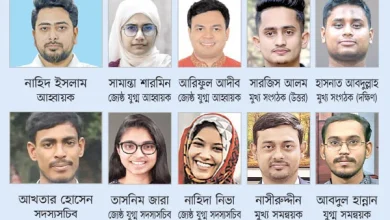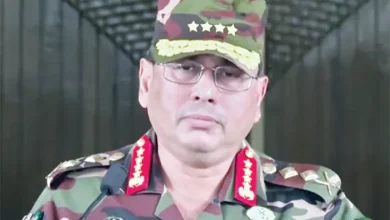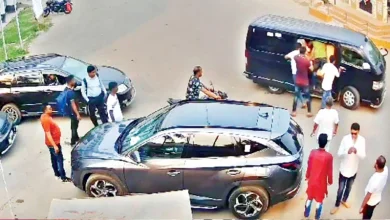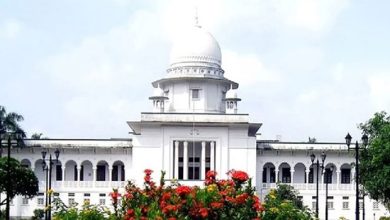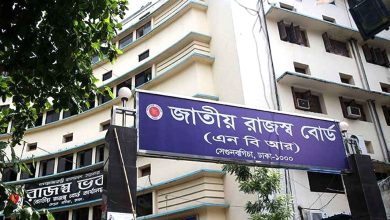Who are behind the KNF, what’s behind the recent attacks?
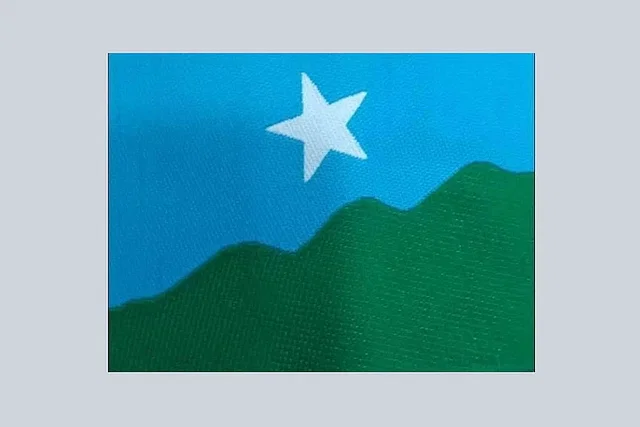
The Kuki-Chin National Front (KNF) emerged as an armed group in the Chittagong Hill Tracts a year or two ago through opening a Facebook page. They also announced the formation of a separate state consisting of nine upazilas of two hill districts of Bangladesh. Allegations of extortion and killings were raised against them from a few armed raids from the inception.
At one point there were allegations that the KNF members were imparting training to the members of Islamic militant groups from plain land.
Since then there have been several armed clashes between KNF members and the law and order forces. Afterwards, the party returned to peace talks with the government. Discussions were supposed to be held again on 22 April. But before that, the armed group robbed three branches of two banks in the hills. Now the mediators of peace talks no longer want to take this initiative forward. As a result, the KNF continues to create an atmosphere of uncertainty and fear.
The incident of robbery in three branches of two banks in two upazilas of Bandarban within 17 hours has created sensation. It is being said by the government that people who carried out the armed attack have been active since at least two years ago.
Attacks on two banks in Bandarban’s Ruma Upazila Sadar on Tuesday night, and in the afternoon on the next day, caused a serious reaction across the country.
Besides, the terrorists opened fire at Thanchi police station on Thursday night. Many of the security analysts believe that an indication of the group’s capacity, expansion and membership growth has become clear through these attacks. They also assume that this may create new instability in some parts of the hilly region.
Who are behind the KNF, what do they seek?
The name of KNF was much discussed at the beginning of 2022 due to news reports of their various activities. Basically, this group announced their existence by opening a page on Facebook. There was armed activity too. The group is initially known to have been formed by some people belonging to the Bom ethnic group in Bandarban. The KNF claims on its Facebook page that it represents six ethnic groups – Bom, Pankhwa, Lusai, Khiang, Mro and Khumi – of Rangamati and Bandarban regions.
They demanded a separate state with the upazilas of Baghaichhari, Barkal, Jurachhari and Bilaichhari in Rangamati and Rowangchhari, Ruma, Thanchi, Lama and Alikadam in Bandarban. They published the map of their imaginary ‘kingdom’ on their Facebook page too. In a series of statements circulated on social media, the organisation said it has formed an armed group called Kuki-Chin National Army (KNA). The president of their parent organisation is Nathan Bom.
The KNF claimed at the time that hundreds of members of its military wing had moved to Myanmar’s Kachin province for guerrilla training three years earlier. A trained team returns in 2021. They went into hiding in 2022. However, several sources say that the number of armed members of the KNF was not very high in the beginning. There were maybe 15 to 20 members then. But later their number increases.
Who is this Nathan Bom?
Nathan Bom, a graduate of Fine Arts Department at Dhaka University is said to be the head of KNF, and is a resident of Eden Para in Ruma Upazila. He is also the founder of a non-governmental organisation, Kuki-Chin National Development Organisation (KNDO) in the Eden Para of Ruma. However, his current location remains unknown.
A neighbour of Nathan Bom from Eden Para told Prothom Alo in May 2022 that Nathan has not been seen in the area for three months.
KNF engages in training militants
Law enforcers had earlier told the media that members of Jamaatul Ansar Fil Hindal Sharqiya, a new militant outfit in the plainland, had undergone armed training at the KNF’s hideout in the hills. They also said that KNF’s relationship with the militant group came to light in October 2022.
It is believed that the KNF hideout was somewhere near Salapaupara in Ruma Upazila, bordering India and Myanmar. The law enforcement agencies carried out several raids and detained several members of the Jamaatul Ansar Fil Hind Al Sharqiya and KNF.
KNF now
KNF has carried out at least nine major terrorist incidents in the past two years. Five army personnel were killed in four attacks by KNF terrorists last year. That year, another eight people were killed in the Khamtangpara area of Rowangchari upazila and one in Mualpipara of Ruma upazila in a clash with another armed group UPDF (Democratic).
Apart from this, on May 8 last year, three members of the Bom community, including an Awami League leader, were shot dead in Paingkhiongpara area of Rowangchhari Upazila, and a shopkeeper (locality head), Thongchul Bom, was shot dead in Ramtharpara of the same upazila on 22 March, 2023.
Besides, on 21 June, 2022, three persons were shot dead by terrorists in Saijam Para of Barathali Union in Rangamati’s Bilaichhari.
When law enforcement forces confirm KNF’s links with the militants and conduct operations, various areas of the hills, especially Ruma, Thanchi, remain practically isolated from other parts of the country. Tourism in those remains closed for a long time. Some people of the Bom community cross the border into Mizoram, India. The common people of the Bom ethnic community face trouble but KNF takes advantage of the time and situation. At that time, they recruit a number of young people into the group, several local sources said.
Wishing not to be named, the source said KNF claims that they have 700 members. But they think the number of members would be somewhere near the figure.
Activities of different armed groups in the hill tracts
The Parbatya Chattagram Jana Samhati Samiti (JSS) started an armed struggle in the Chittagong Hill Tracts in the mid-seventies demanding autonomy. Their armed wing was known as Shanti Bahini.
This armed movement, which lasted for more than two decades, ended on 2 December 1997 after the signing of the historic Chittagong Hill Tracts Peace Accord. During this period of armed conflict, several small armed groups were formed in the hills. But none of them last long.
Following the accord, a group of anti-agreement hill youth formed an organisation, The United People’s Democratic Front (UPDF). The conflict of JSS with them has not stopped even today.
A part of JSS broke away from the main party in 2007 and formed another organisation called JSS (Larma).

